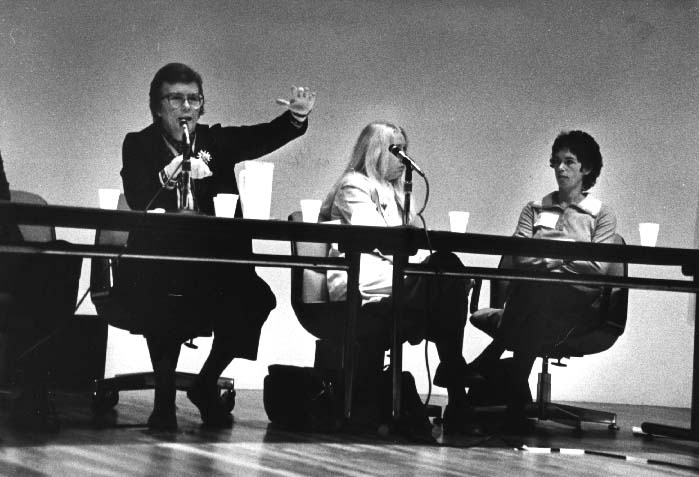The New Urban Leaders, by Joyce Ladner. Brookings Institution Press, Washington D.C., 2001. 135 pp. $22.95.
Kent Amos was an IBM executive who, with his wife, raised at-risk foster children at home. In the mid 1980’s he decided take this calling further. He quit his comfortable job to form the Urban Family Institute, which is dedicated to helping families take care of their children. The Amos’s have now helped 87 children; 73 of them have gone to college, 61 have graduated, and 14 have advanced degrees.
Everybody loves inspiring stories like these. Here’s a book full of them. The New Urban Leaders begins with several in-depth profiles of several people transforming the lives of individuals in very low-income communities, primarily through youth work. Joyce Ladner then uses those profiles, and some additional examples, to define and describe the “new urban leader.” These leaders operate in urban environments with high levels of violence, drugs, incarceration, homelessness, joblessness, and family distress. Yet, despite limited public and private-sector support, they have achieved major success in working with youth to reduce violence and substance abuse. A significant number of the youth they work with attend college and develop careers.
Ladner’s profiles include Robert Moses, a well known civil rights worker who started Project Algebra in Cambridge, Massachusetts, to enable inner-city youth to succeed in math. Project Algebra transforms the learning of essential mathematical skills into problem-solving methods, and has served over 40,000 youth in a dozen cities nationwide. She also tells us about Eugene Rivers, a minister and founder of the Ten Point Coalition, an ecumenical group that works directly with Boston youth to reduce gang violence and drug abuse. Each of these leaders sets high standards and a supportive environment for helping youth and adults achieve their goals.
A new urban leader, according to Ladner, is one who works outside the system in responding to pressing human need, developing resources and supporters. This cadre of leaders has emerged to fill the vacuum left by the lack of government commitment and resources in low-income communities, Ladner says. These leaders are united by a willingness to take significant risks – like Kent Amos did – in the face of formidable opposition, and by their ability to draw upon their values, faith, and skills to maintain a clear sense of mission and purpose. (Unfortunately, Ladner seems to have a general blind spot: Out of her many examples, she only gives one woman any significant attention.)
It is challenging to replicate any social intervention, but even more so those that are based on unique leadership styles and heavy on intangible aspects. Recognizing this, Ladner suggests that urban leaders must place a priority on building intergenerational organizations to nurture new leadership, but her analysis of what that means is scant. Nurturing new leadership is not easy in any organization, and it can be extremely difficult in organizations built around a charismatic founder who has achieved great things with limited resources, something that could characterize many of Ladner’s examples. It’s no coincidence that she is profiling individuals, not organizations. It is difficult to build long-term institutions and develop the next generation of leadership with a strong dominant leader whose vision and control tends to overwhelm others.
To meet the challenge Ladner has identified, urban leaders must learn to disperse leadership opportunities throughout their evolving organization as they continue to do their good work. They need to develop basic structures and systems that encourage strategic thinking, organization-wide learning, and shared responsibility. This does not imply that urban leaders should stop taking risks or providing strong leadership, but that they should put a priority on encouraging participants and other stakeholders to develop their own leadership skills. For example, Mary Nelson, long-time head of Bethel New Life CDC in Chicago, has created a leadership training program for local residents. Upon completion, participants are eligible for $500 grants to implement small community improvement projects; some are hired by Bethel New Life. More in-depth profiles of how leaders are making strides in this regard would have greatly enhanced the book.
New Urban Leaders is unfortunately not very well-organized. Ladner also pays scant attention to networks and resources that urban leaders can draw on to increase their effectiveness. There are proven networks out there, such as the National Community Building Network, the Industrial Areas Foundation, the National Congress for Community Economic Development, and the Center for Community Change, that train community leaders, offer management and technical assistance, assist in accessing financial resources, and allow leaders to share their insights and knowledge with each other. Even (or perhaps especially) the leaders Ladner describes rely on resources like these, so to ignore their existence makes successful leaders seem like isolated anomalies.
By drawing attention to the vision, characteristics, and successes of the new urban leaders, Joyce Ladner has shown that talented individuals with a deep commitment to social justice can have a dramatic impact on the lives of others. That point alone could help attract others to this vital field of work.
Robert O. Zdenek is the director of community economic development at United Way of America and vice president of the National Housing Institute.





Comments